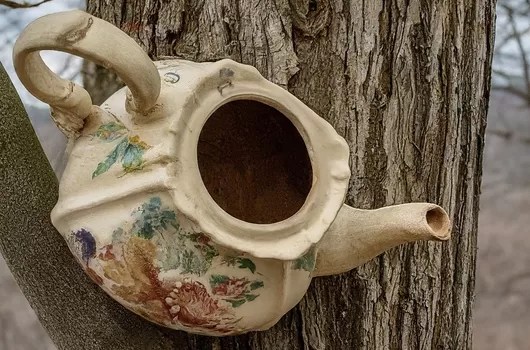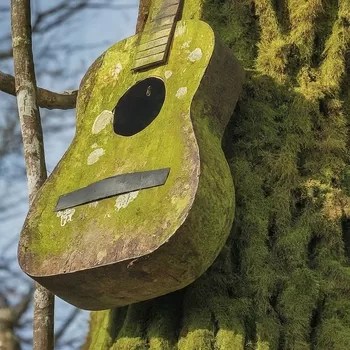In a world increasingly conscious of sustainability, finding new uses for old items is both an art and a necessity. Repurposing everyday objects not only reduces waste but also provides unique solutions for environmental challenges.
One such innovative idea is transforming old letterboxes and guitars into nesting boxes for wildlife. These creative upcycling projects offer a new lease on life for discarded items while supporting our feathered and furry friends.
Repurposing Old Letterboxes and Guitars as Nesting Boxes
Upcycling old items like letterboxes and guitars into nesting boxes is a wonderful way to support wildlife while embracing creativity and sustainability.
These projects not only provide essential habitats for birds and small mammals but also add character and charm to your garden.
Old Guitars: From Music to Mammal Abode
Old, unused guitars can be turned into unique nesting boxes for small mammals or birds. Their hollow bodies and sound holes make them suitable for wildlife seeking refuge.
To transform a guitar, start by cleaning it thoroughly and removing any internal components such as strings and hardware. The existing sound hole can serve as an entrance.
If needed, enlarge it or add additional holes to suit the intended inhabitants. Line the inside of the guitar with straw, leaves, or wood shavings to create a comfortable nesting environment.
Attach the guitar to a tree or a sturdy structure, ensuring it is secure and positioned horizontally to mimic natural hollows. Using a guitar as a nesting box not only supports wildlife but also creates a fascinating garden feature that sparks conversation.

Old Letterboxes: From Snail Mail to Bird Nesting Haven
Old letterboxes, once the sentinels of our homes’ front yards, can easily be converted into charming and functional nesting boxes.
Their sturdy structure and enclosed space make them ideal for small birds seeking shelter and a safe place to raise their young.
To transform a letterbox, begin by thoroughly cleaning it to remove any rust, dirt, or old paint, ensuring there are no sharp edges that could harm the birds.
Depending on the bird species you want to attract, drill an appropriately sized entrance hole. For small birds like wrens or chickadees, a hole with a diameter of about 1.25 inches works well.
Add a few small holes in the bottom for drainage and on the sides for ventilation to keep the interior dry and cool. Finally, securely mount the letterbox on a post or tree, ensuring it is at a safe height from predators.
This repurposing not only provides a cozy home for birds but also adds a quirky, nostalgic touch to your garden.
Other Upcycling Ideas for Nesting Boxes
The possibilities for upcycling items into nesting boxes are endless. Old drawers from discarded furniture can be transformed into nesting boxes by adding an entrance hole and mounting them on trees or posts.
Vintage teapots with their spouts removed can serve as quaint nesting spots for small birds. Simply secure them in place and provide a suitable entrance.

An old pair of boots can be nailed to a tree, providing a unique nesting space for birds or small mammals.
Sections of PVC pipes can be modified into durable nesting boxes by cutting them to the desired length, adding an entrance hole, and mounting them horizontally or vertically.
Small wooden crates or wine boxes can be repurposed into nesting boxes with a few modifications. These can be mounted on walls or trees, offering ample space for various wildlife.
Creative Upcycling for Wildlife Conservation
By thinking outside the box and repurposing everyday objects, we can make a significant positive impact on our environment and the creatures that share it with us.

So, the next time you come across an old, unused item, consider its potential as a cozy new home for wildlife.
Related stories
Our Gardening section
Building nesting boxes to save wildlife impacted by logging
Australia’s best tasting heirloom tomatoes
Global Food Production Dilemma: Grow & Buy Local
Farmers prepare for supercharged El Niño
Moss is vital for the health of soils – here’s why
Do you want to live on an Intentional Community



